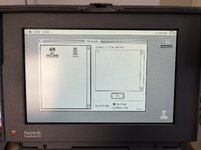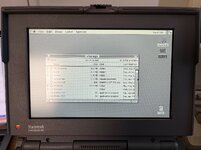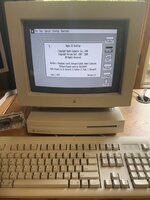[12ms] Platform: BlueSCSI Pico
[12ms] FW Version: 2023.07.08-dev Aug 26 2023 21:35:31
Flash chip size: 2048 kB
=== SD Card Info ===
SD card detected, exFAT volume size: 60318 MB
SD Name: USD00, MID: 0xAD, OID: 0x4C 0x53
=== Global Config ===
Reading configuration from bluescsi.ini
Active configuration:
-- SelectionDelay: 0
-- EnableSelLatch is on
=== Finding images in / ===
== Opening /NE4.hda for ID: 4 LUN: 0
---- Configuring as network based on image name
---- Image ready
== Opening /HD1 DaynaPORT 7.5.3.hda for ID: 1 LUN: 0
---- Image ready
== Opening /HD2 BlueSCSI v2 PicoW Setup.hda for ID: 2 LUN: 0
---- Image ready
== Opening /HD3 DaynaPort Latest.hda for ID: 3 LUN: 0
---- Image ready
== Opening /HD0 System 6.hda for ID: 0 LUN: 0
---- Image ready
=== ROM Drive ===
Platform supports ROM drive up to 1692 kB
---- ROM drive image not detected
=== Configured SCSI Devices ===
* ID: 0, BlockSize: 512, Type: Fixed, Quirks: Apple, Size: 82016kB
* ID: 1, BlockSize: 512, Type: Fixed, Quirks: Apple, Size: 896kB
* ID: 2, BlockSize: 512, Type: Fixed, Quirks: Apple, Size: 102464kB
* ID: 3, BlockSize: 512, Type: Fixed, Quirks: Apple, Size: 1536kB
* ID: 4, Type: Network, Quirks: Apple
=== Network Initialization ===
Wi-Fi MAC: 00:80:19:52:83:39
Connecting to Wi-Fi SSID "PastureRidge" with WPA/WPA2 PSK
Initialization complete!
INFO: Pico Voltage: 3.273V.
Successfully connected to Wi-Fi SSID "PastureRidge"




